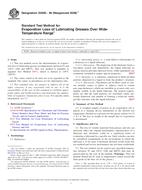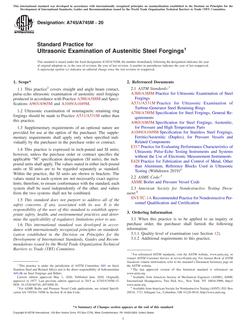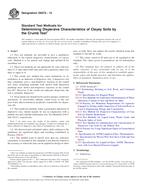1.1 These practices cover the decontamination of field equipment used in the sampling of soils, soil gas, sludges, surface water and ground water at waste sites known or suspected of containing low level radioactive wastes.
1.2 This practice is applicable at sites where low level radioactive wastes are known or suspected to exist. This practice may also be applicable for the decontamination of equipment used in known or suspected transuranic, or mixed wastes when used by itself or in conjunction with Practice D5088.
1.3 Procedures are contained in this practice for the decontamination of equipment that comes into contact with the sample matrix (sample contacting equipment), and for ancillary equipment that has not contacted the sample, but may have become contaminated during use (non-contacting equipment). For sample contacting equipment there are four separate procedures (Procedure A through D) in Section 8. For non-contacting equipment, one procedure is presented as covered in Section 9.
1.4 This practice is applicable to most conventional sampling equipment constructed of metallic and hard, smooth synthetic materials. Materials with rough or porous surfaces, or having a high sorption rate should not be used in radioactive waste sampling due to the difficulties with decontamination.
1.5 In those cases where sampling will be periodically performed, such as sampling of wells, consideration should be given to the use of dedicated sampling equipment if legitimate concerns exist for the production of undesirable or unmanageable waste byproducts, or both, during the decontamination of tools and equipment.
1.6 This practice does not address regulatory requirements for personnel protection or decontamination, or for the handling, labeling, shipping, or storing of wastes or samples. Specific radiological release requirements and limits must be determined by users in accordance with local, state and federal regulations.
1.7 For additional information in the United States, see U.S. Department of Energy (DOE) 10 CFR Part 835 and U.S. Nuclear Regulatory Commission (NRC) 10 CFR Part 20.
1.8 The values stated in SI units are to be regarded as standard. No other units of measurement are included in this standard.
1.9 This practice offers an organized collection of information or a series of options and does not recommend a specific course of action. This document cannot replace education or experience and should be used in conjunction with professional judgement. Not all aspects of this practice may be applicable in all circumstances. This ASTM standard is not intended to represent or replace the standard of care by which the adequacy of a given professional service must be judged nor should this document be applied without consideration of a project’s many unique aspects. The word “standard“ in the title of this document means only that the document has been approved through the ASTM consensus process.
1.10 This standard does not purport to address all of the safety concerns, if any, associated with its use. It is the responsibility of the user of this standard to establish appropriate safety and health practices and determine the applicability of regulatory limitations prior to use. Specific precautionary statements are given in Section 6.
Product Details
- Published:
- 05/01/2010
- Number of Pages:
- 8
- File Size:
- 1 file , 96 KB
- Redline File Size:
- 2 files , 190 KB


